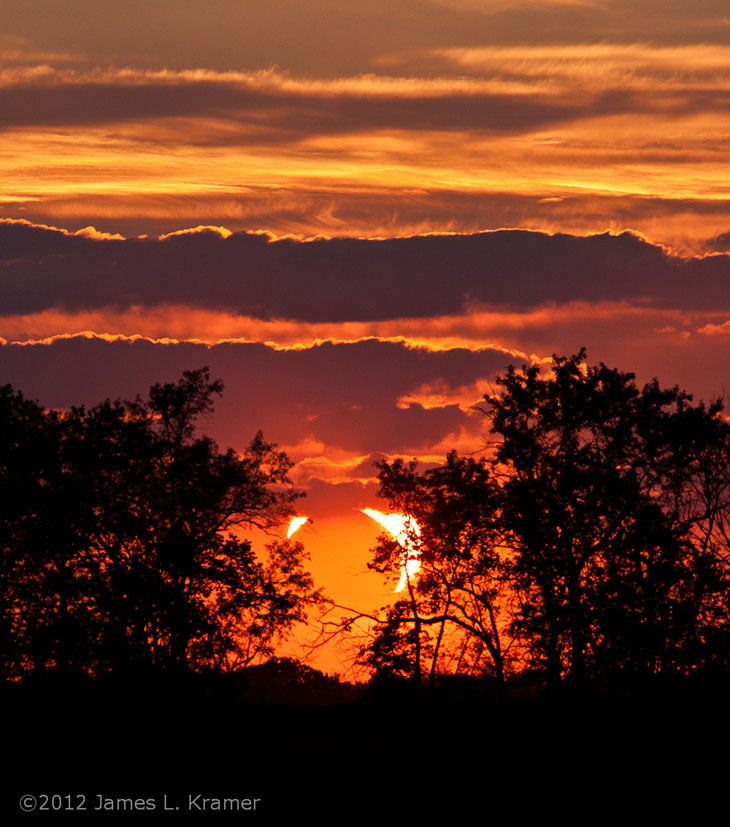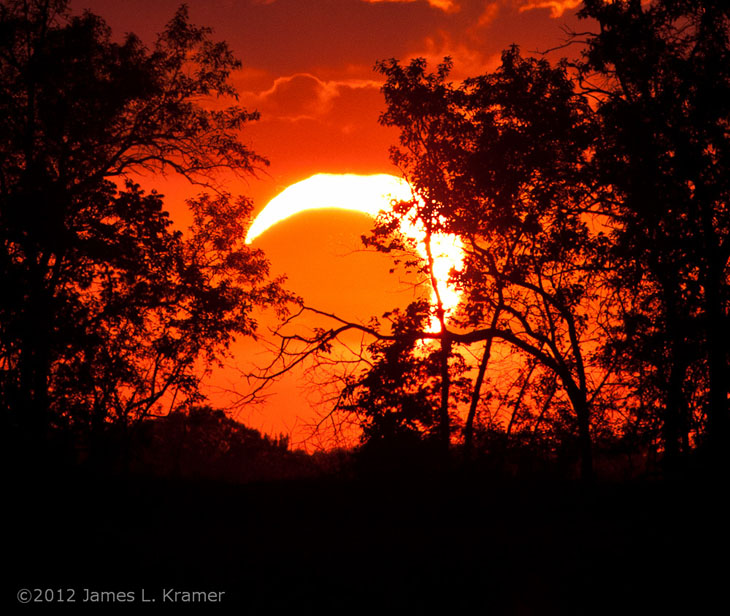There’s a common argument that crops up in discussions of UFO sightings, always from UFO proponents (which, for my purposes here, denotes those who feel that the large number of reports are indicative of something significant – there isn’t a consensus on exactly what.) It can also crop up in regards to paranormal and even religious experiences. Made in regards to eyewitness accounts and their veracity, the argument is, “Why would anyone lie about such experiences? What would they stand to gain from that?” It often goes on to say that there is little money to be made from such, and/or that anyone doing so is setting themselves up for derision and social ostracism. We’ll set these related points aside for a moment to tackle the primary one: why would anyone lie? This question was even raised by a book reviewer in his own defense recently.
The question itself seems remarkably naïve, but it’s possible that it doesn’t stem from naïveté, but instead from rationalizing a tendency to take eyewitness reports at face value because it serves as support for the favored notion of UFO sightings as ‘significant.’ Ignoring the pop psychology angle, the question is essentially the same as, “Why would anyone perpetrate a hoax?” It’s a question worth examining, but hardly very supportive of the idea that no one actually perpetrates hoaxes; of course they do, all the time really. One might as well ask, “Why watch sports on TV?” or “Why buy a car that can go 200 kph when the speed limit is 100?” and so on. It smacks of believing that humans are always and dependably rational.
Hoaxes, however, are an interesting topic, most especially those where no apparent gain is possible, or where a lot of effort is required to maintain them. Yet, a hoax is simply a practical joke applied on a larger scale, aimed more publicly (and usually impersonally) than a practical joke. A practical joke is not only done for humor, but often as a means of humiliation, or as a challenge: the perpetrator attempts to establish a form of superiority, however benign, over the victim in a battle of wits. Often, it is a manipulation of emotional reaction – the victim responds as if events are random or undirected, entirely differently than they would if they were aware that someone is trying to manipulate them. In these cases the joke exists solely because the victim does not consider the correct alternative.
These traits apply especially well to hoaxes. A successful hoax draws in as many people as possible, which implies that the hoaxer is more clever than all of the victims/believers, in effect raising the hoaxer higher in status (within their own perspective, at least) than all who succumbed. In many cases the hoax is intended as a comment on society, targeting the fixation on a particular explanation without considering alternatives; it may highlight the reliance on social support (all of these people believe, so I should too) that humans utilize a bit too often, instead of individual examination and weighing of the factors alone. Most hoaxes are non-harmful, victimless exercises, breaking few if any laws and rarely even disadvantaging anyone. The level of anyone’s involvement is dictated solely by themselves – if they either fail to fall for it or simply treat it as lacking significance, they are free from any ill effects. This means, in all cases where such traits are applicable, that the victim has simply done it to themselves.
True, not every hoax falls into such categories, such as fake bombs being planted in public areas – here the hoaxer preys on substantial fears and, frankly, rational erring on the side of caution; such ruses are both malicious (whether intended to be or not) and criminal. But the large majority of hoaxes avoid such targets in favor of harmless applications.
In some cases, hoaxes start out small, but gain more notoriety than intended or imagined by the perpetrator, and quickly pass the point where revealing the hoax would still be greeted with rueful laughs and shaken fingers – the Cottingley Fairies are a great example. The hoaxer is then placed in a position where they must either face serious public reprisal and embarrassment to reveal their intent, or maintain the charade until such a time when the revelation is either foregone or considered irrelevant. But this serves to explain how a hoax can become extraordinarily elaborate without any intention or planning, like a child playing with matches. We need to recognize that hindsight cannot be reasonably applied; a simple hoax that grew just a little too big might engender some fear of scolding from, for instance, parents or local authorities, which may be enough to discourage the hoaxer from admitting their stunt. As it continues to grow, the potential blowback becomes commensurately greater, making the parental scolding seem ridiculously tame in comparison – but is it safe to believe that any hoaxer could accurately predict how far it could reach? To assume that a hoax would be admitted before it got too big, therefore any large-scale public attention is evidence against a hoax, demonstrates a lack of perspective.
In situations such as UFO reporting, the willingness to believe of the majority of proponents is already well-known, and little support other than earnest storytelling is needed to perpetrate a hoax; this makes the task far easier. In fact, this can even result in the hoaxer gaining accomplices from the victims themselves, as the victims become reluctant to admit that they fell for it or that a hoax even exists, and struggle to find ways to support the premise of the hoax rationally. And this doesn’t just happen in UFO circles, as anyone familiar with the name “Chris Mooney” knows.
Seen from the hoaxer’s standpoint, every credulous remark, every news story, every believer, all feeds into their ego, racking up points on an internal scorecard. It really is no different than anyone pursuing sports records or high test scores, since these are also methods of placing any individual above a large number of others. In fact, it can even be said that the hoaxer accomplishes far more than the athlete, since not only are their skills more likely to be applicable to career functions (marketing, politics, sitcom writing,) any emphasis on reducing gullibility and increasing critical examination within the general public is solely beneficial. On rare occasions this is even recognized (“Fool me once, shame on you; fool me twice, shame on me”), but overall, hoaxes are resented more often than appreciated, generally from embarrassment over being caught – this is unfortunate when compared against the utterly pointless and selfish pursuit of sports trophies, and the generally positive reaction to such.
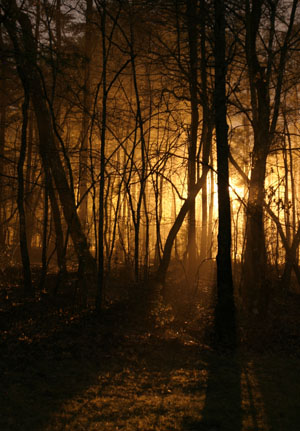 Returning to the question of what someone might stand to gain from a hoax aimed specifically at the UFO (or paranormal, or religious) community, one has to be unfathomably ignorant to ignore the amount of money someone can sell a story or a photo for, much less speaker’s fees and book rights. And in some cases, it may be true that “the general public” might find someone less than reputable, but the UFO community isn’t too discriminating and is more than happy to shower praise and huzzahs on even the weakest and least substantiated stories – and continue to do so for decades, long after the general public has stopped paying attention. It’s strange that more people don’t take advantage of this, really.
Returning to the question of what someone might stand to gain from a hoax aimed specifically at the UFO (or paranormal, or religious) community, one has to be unfathomably ignorant to ignore the amount of money someone can sell a story or a photo for, much less speaker’s fees and book rights. And in some cases, it may be true that “the general public” might find someone less than reputable, but the UFO community isn’t too discriminating and is more than happy to shower praise and huzzahs on even the weakest and least substantiated stories – and continue to do so for decades, long after the general public has stopped paying attention. It’s strange that more people don’t take advantage of this, really.
Consider, too, that any hoaxer who is treated as a crackpot or mental defective by any portion of the public knows that their story is a charade, specifically intended to provoke a response. They are far less likely to be embarrassed by such attitudes because they have no reason to take them personally – it’s an act. Any stage actor who plays a villain and provokes negative responses over their “evil” is proud of this, since their goal is to be believable. Failure, to any hoaxer, is only provoking no reaction. But what this also brings up is that it is much more likely that anyone honestly relating an actual encounter, personally and emotionally involved, is the person who will feel embarrassed by public derision and the loss of their reputation – which probably makes it more likely that a prominently publicized account is a hoax rather than genuine, at least when considered from the emotional standpoint. Note that this is exactly opposite how the argument is usually forwarded.
Finally, there is the notoriety aspect to be considered. While any claim of an encounter may generate certain amounts of both good and bad public reactions – support from UFO proponents on one hand, and ridicule from cynics on the other – both of these are considerably more attention than any individual typically garners. People are arrested all of the time for such pointless acts as streaking and public nudity, destruction of property, disrupting social events, climbing monuments, and various other less-than-reputable actions. Numerous celebrities are especially well known for being assholes. For some, it’s not a matter of good or bad attention, merely attention, sometimes in whatever manner works best. Consider, too, the practices of the internet troll, whose sole motivation is to provoke a response and “push buttons” – it is a form of manipulation, the psychological equivalent of using an opponent’s strength against themselves, and hardly qualifies as being a respected practice in the least, yet there is no shortage of these.
Failing to recognize the possibility of hoaxes naturally makes someone a prime target for such, and within the realm of UFO proponents and enthusiasts (and again, other topics as well,) this failure is far too prevalent. When most of the evidence advanced in support of extra-terrestrial visitation et al consists of personal accounts and indistinct photos and video, hoaxing is remarkably easy. Denying this makes it even easier. Worse, it opens the door to dismiss UFO proponents (et al) as not just unworthy of being taken seriously, but gullible and fatuous, by anyone who notices the lack of rigor. And while this seems nasty, one must ask how else such terms are reasonably defined?
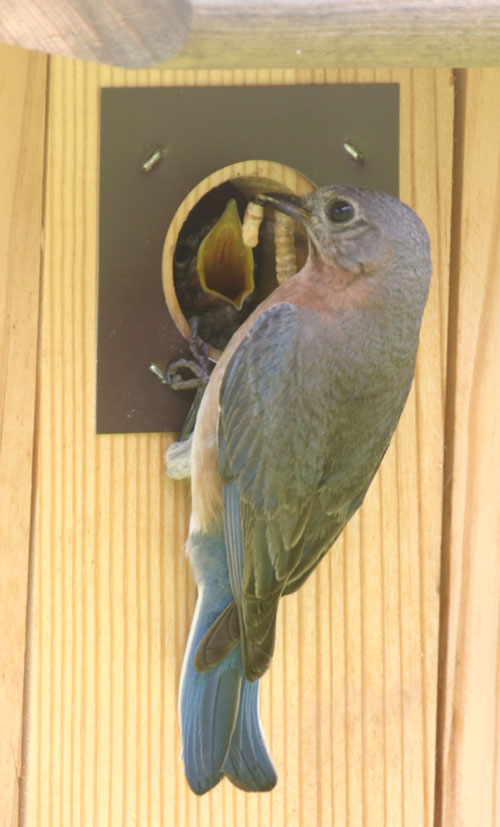 Sometimes you actually have some cooperation from your subjects, despite their best efforts. Mom paused for a nice profile, even allowing a view of her progenys’ meal, while one of the sprogs smiled (or something) for the camera in the opening of the nest box. It’s all because of clean living and pure thoughts.
Sometimes you actually have some cooperation from your subjects, despite their best efforts. Mom paused for a nice profile, even allowing a view of her progenys’ meal, while one of the sprogs smiled (or something) for the camera in the opening of the nest box. It’s all because of clean living and pure thoughts.




















































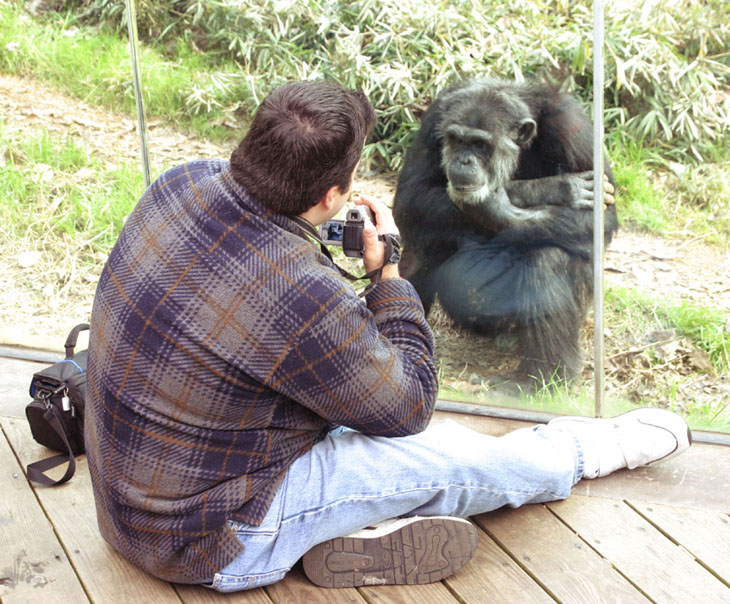
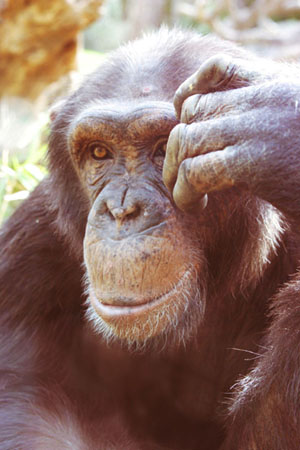 When traveling, most people like to get their traveling companions in the frame with something that speaks of their location, which is great – but if it’s simply a pose struck in front of the Eiffel Tower, it only serves to document that you’ve been there. A more candid shot, however, may speak not only of the locale, but the activities, the appeal, the fun you’re having, the kind of people you’re meeting, what you’re eating, perhaps even opening or closing a story. Your frames might show both a nice introspective closeup of a chimpanzee (Pan troglodyte,) but also communicate the behavior of others in such circumstances, like the image at top. Very slight changes in shooting technique may turn lots of subjects into abstracts, which can be used in countless ways. You might illustrate the anatomy of a reptile, and its habits, its habitat, its food source, and throw in some artistic and expressive frames as well.
When traveling, most people like to get their traveling companions in the frame with something that speaks of their location, which is great – but if it’s simply a pose struck in front of the Eiffel Tower, it only serves to document that you’ve been there. A more candid shot, however, may speak not only of the locale, but the activities, the appeal, the fun you’re having, the kind of people you’re meeting, what you’re eating, perhaps even opening or closing a story. Your frames might show both a nice introspective closeup of a chimpanzee (Pan troglodyte,) but also communicate the behavior of others in such circumstances, like the image at top. Very slight changes in shooting technique may turn lots of subjects into abstracts, which can be used in countless ways. You might illustrate the anatomy of a reptile, and its habits, its habitat, its food source, and throw in some artistic and expressive frames as well. The other benefit that thinking of purpose provides is weaning the photographer away from grab shots and straightforward compositions. There’s a thing called “inattention blindness” that has recently gained a lot of attention (a ha ha) on the web, mostly in videos featuring gorilla costumes, but what it means is we can focus all of our attention on one particular aspect of a scene and fail to even register anything else plainly within our field of vision. It happens very frequently in photography as we try to catch the action, establish the pose, or make sure our subject is sharply focused, so considerations of purpose leads to breaking this narrowed attention and examining the frame more, seeing the possibilities inherent from the background, or a change of position effects the composition, or different lighting, and so on.
The other benefit that thinking of purpose provides is weaning the photographer away from grab shots and straightforward compositions. There’s a thing called “inattention blindness” that has recently gained a lot of attention (a ha ha) on the web, mostly in videos featuring gorilla costumes, but what it means is we can focus all of our attention on one particular aspect of a scene and fail to even register anything else plainly within our field of vision. It happens very frequently in photography as we try to catch the action, establish the pose, or make sure our subject is sharply focused, so considerations of purpose leads to breaking this narrowed attention and examining the frame more, seeing the possibilities inherent from the background, or a change of position effects the composition, or different lighting, and so on.
 During the previous transit in 2004, I was living in Florida and had a basic Galilean telescope that might have produced some nice tight shots from the sunrise event, had a single towering thunderhead not obscured the sun until well after the transit ended. It was, quite possibly, the same thunderhead that I’d been doing time-exposures of hours before, which I think means, “You win some, you lose some.”
During the previous transit in 2004, I was living in Florida and had a basic Galilean telescope that might have produced some nice tight shots from the sunrise event, had a single towering thunderhead not obscured the sun until well after the transit ended. It was, quite possibly, the same thunderhead that I’d been doing time-exposures of hours before, which I think means, “You win some, you lose some.”
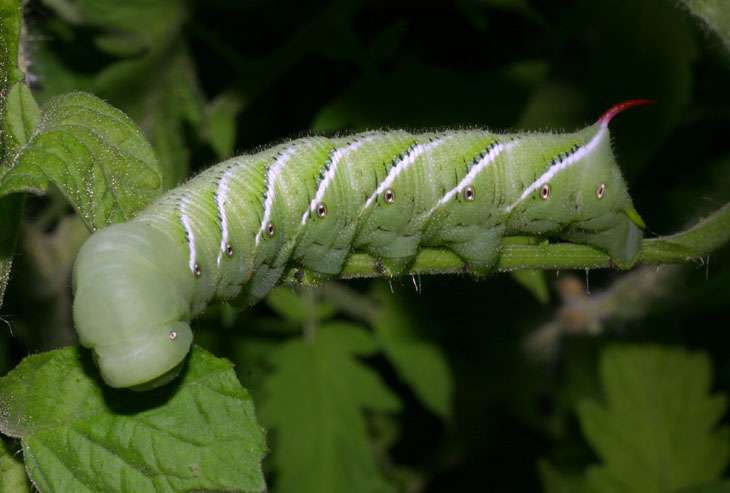
 Anyway, yesterday I discovered that the creature scarfing the tops of some of our tomato plants was not the suspected deer in the neighborhood, but a fat tobacco hornworm, the larval stage of a six-spotted sphinx moth (Manduca sexta,) closely related to, and often mistaken for, the tomato hornworm, larva of the five-spotted hawkmoth (Manduca quinquemaculata.) The bane of tomato-growers everywhere, hornworms aren’t really difficult to get rid of, for the home grower anyway – while a little hard to spot, all you have to do is pluck them off and fry them up with a little vinegar and hush puppies. All right, seriously, don’t follow that advice, because hush puppies aren’t very good for you. But I suspect people have more of a fear of hornworms since they’re huge as far as caterpillars go, bloated like a Hut, and have a nasty-looking little rapier on their hinders. Since I haven’t ever been tagged by either end of a hornworm, even years ago while fretting over not getting a Star Destroyer for christmas, I’m inclined to say the fears are unjustified. My subject here reluctantly served as a photo model before taking a dip in a nice cool and refreshing bucket of water (they’re also terrible swimmers.) Hey, don’t judge me, this is natural selection; just like tearing into a beehive for honey is a bad move, messin’ with a human’s tended garden is Darwinism at its most efficient.
Anyway, yesterday I discovered that the creature scarfing the tops of some of our tomato plants was not the suspected deer in the neighborhood, but a fat tobacco hornworm, the larval stage of a six-spotted sphinx moth (Manduca sexta,) closely related to, and often mistaken for, the tomato hornworm, larva of the five-spotted hawkmoth (Manduca quinquemaculata.) The bane of tomato-growers everywhere, hornworms aren’t really difficult to get rid of, for the home grower anyway – while a little hard to spot, all you have to do is pluck them off and fry them up with a little vinegar and hush puppies. All right, seriously, don’t follow that advice, because hush puppies aren’t very good for you. But I suspect people have more of a fear of hornworms since they’re huge as far as caterpillars go, bloated like a Hut, and have a nasty-looking little rapier on their hinders. Since I haven’t ever been tagged by either end of a hornworm, even years ago while fretting over not getting a Star Destroyer for christmas, I’m inclined to say the fears are unjustified. My subject here reluctantly served as a photo model before taking a dip in a nice cool and refreshing bucket of water (they’re also terrible swimmers.) Hey, don’t judge me, this is natural selection; just like tearing into a beehive for honey is a bad move, messin’ with a human’s tended garden is Darwinism at its most efficient.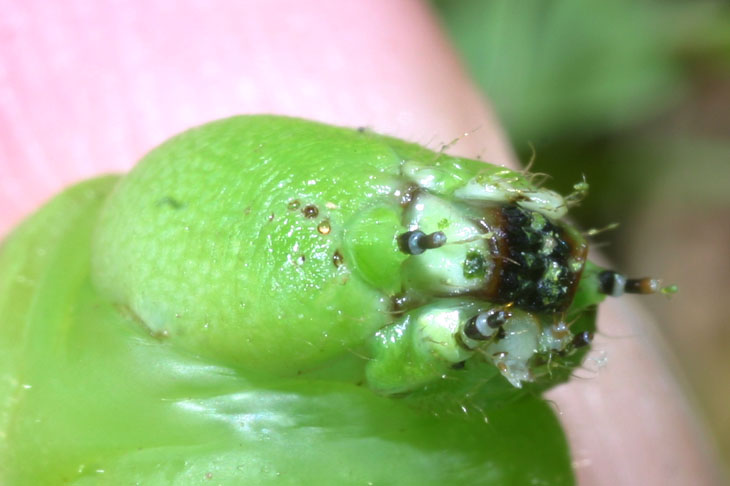




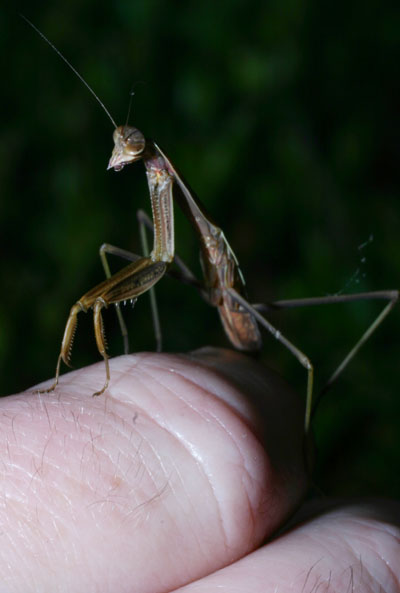 I should probably feel a bit insulted, since my model here (I believe this is a Chinese mantis, Tenodera aridifolia sinensis,) undertook its meticulous foreleg cleaning efforts immediately after I’d coaxed it to walk on my hand for the scale shot. Or perhaps this is a measure of mantis respect. My friend here is better than twice the size it was when I first found them and got the dew pics, about 4 cm in length, but still well below adult size (that’s my finger, in case it’s not clear.) Nobody has been cooperative enough to let me photograph the molting, even though I’m pretty certain it’s happened at least twice, judging from the color changes. The chances of my capturing this activity in images is slight, however; immediately after molting their chitin is still soft, leaving them very vulnerable, so they tend to perform the molt while hidden and remain so until they feel safe – the thick bushes provide plenty of opportunity for this. Still, I keep watching.
I should probably feel a bit insulted, since my model here (I believe this is a Chinese mantis, Tenodera aridifolia sinensis,) undertook its meticulous foreleg cleaning efforts immediately after I’d coaxed it to walk on my hand for the scale shot. Or perhaps this is a measure of mantis respect. My friend here is better than twice the size it was when I first found them and got the dew pics, about 4 cm in length, but still well below adult size (that’s my finger, in case it’s not clear.) Nobody has been cooperative enough to let me photograph the molting, even though I’m pretty certain it’s happened at least twice, judging from the color changes. The chances of my capturing this activity in images is slight, however; immediately after molting their chitin is still soft, leaving them very vulnerable, so they tend to perform the molt while hidden and remain so until they feel safe – the thick bushes provide plenty of opportunity for this. Still, I keep watching.
 Returning to the question of what someone might stand to gain from a hoax aimed specifically at the UFO (or paranormal, or religious) community, one has to be unfathomably ignorant to ignore the amount of money someone can sell a story or a photo for, much less speaker’s fees and book rights. And in some cases, it may be true that “the general public” might find someone less than reputable, but the UFO community isn’t too discriminating and is more than happy to shower praise and huzzahs on even the weakest and least substantiated stories – and
Returning to the question of what someone might stand to gain from a hoax aimed specifically at the UFO (or paranormal, or religious) community, one has to be unfathomably ignorant to ignore the amount of money someone can sell a story or a photo for, much less speaker’s fees and book rights. And in some cases, it may be true that “the general public” might find someone less than reputable, but the UFO community isn’t too discriminating and is more than happy to shower praise and huzzahs on even the weakest and least substantiated stories – and 